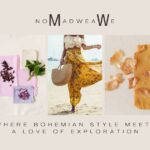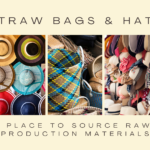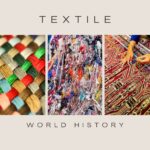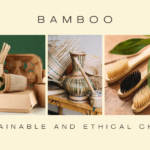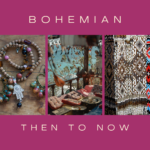Guiuan: A Town with a Global Legacy
My journey with NomadWeave takes me back to my roots in Guiuan, a small coastal town in the Eastern Samar province of the Philippines. Guiuan may seem like a quiet corner of the world, but this place holds a special place in global history. It was here, in March 1521, that Ferdinand Magellan’s crew landed, marking the first documented European contact with the Philippines. More recently, Guiuan demonstrated remarkable resilience following the devastation of Super Typhoon Haiyan (Yolanda) in 2013. The spirit of the people and the beauty of this region continue to inspire me as I build a brand that honors both heritage and a commitment to a more sustainable future.
Project Updates: Our Philippine Sourcing Journey
Project Updates: Our Philippine Sourcing Journey
- Discovering Local Fabrics: From traditional abaca weaves to innovative eco-friendly textiles, I’m immersing myself in the rich world of Filipino fabrics. Each discovery brings me closer to finding the perfect materials for NomadWeave.
- Seeking Ethical Partners: It’s not just about beautiful clothing, but also how it’s made. I’m exploring small businesses and artisans who share my commitment to sustainability and ethical labor practices.
- Connecting with Communities: Learning about cooperatives and family-run businesses is crucial. I’m looking for partners who can not only create beautiful pieces, but also benefit from a long-term collaboration.
Initial Study
Textile Materials
A breakdown of some well-known textile materials made in the Philippines, along with their characteristics and uses:
Traditional Fabrics:
- Piña (Pineapple Fiber): A delicate, sheer fabric made from the leaves of pineapple plants. It’s often used for formal wear like Barong Tagalog (traditional Filipino men’s shirts) due to its elegant sheen and intricate embroidery.
- Abaca: A strong, durable fiber from a species of banana tree. It’s used in various applications, from ropes and bags to rugs and clothing with a more rustic feel.
- Inabel: A handwoven fabric primarily from the Ilocos Region. It’s known for its intricate patterns, often geometric, and is used for blankets, table runners, and clothing.
- T’nalak: A colorful, intricately patterned fabric traditionally woven by the T’boli people of Mindanao. It’s made from abaca fibers dyed with natural pigments and often features symbolic designs.
Modern Adaptations:
- Cotton Blends: Philippine cotton is often blended with other fibers like rayon or polyester for softness, easy care, and affordability.
- Recycled Fabrics: There’s a growing trend of incorporating recycled materials, like plastic bottles, into fabric blends, creating eco-friendly textile options.
- Natural Dyes: Many weavers and designers are reviving the tradition of using natural dyes from plants and minerals, offering unique colors and a focus on sustainability.
Things to Consider:
- Regional variations: Textile traditions can vary across different regions in the Philippines.
- Availability: Some fabrics, especially handwoven ones, might have limited availability.
- Cost: Handwoven fabrics using traditional techniques can be more expensive.
Complexities of Ethical Sourcing
Initial Research Findings:
Challenges:
- Intricate supply chains: Tracing materials and labor practices across multiple suppliers can be difficult, reducing transparency.
- Lack of transparency: Some businesses might not disclose working conditions, wages, or environmental impact fully.
- Potential for “greenwashing”: Businesses might exaggerate their ethical or sustainable practices.
Promising Avenues:
- Focus on smaller businesses/artisans: They often have more control over their practices and are invested in transparent partnerships.
- Look for certifications: Fair Trade, Better Cotton Initiative (BCI), and others can be a starting point, but additional research is always needed.
- Potential for positive impact: Collaborating with ethical partners supports local communities, preserves traditional craftsmanship, and creates a more sustainable fashion industry.
Next Steps:
My ongoing research will focus on identifying specific small businesses and artisan communities committed to ethical practices. I also plan to connect with NGOs and ethical fashion organizations in the Philippines for additional insights and recommendations.
Connecting with Local Communities
My goal is to identify communities within Samar or Eastern Samar engaged in textile production or related crafts that might align with the NomadWeave vision. Specifically, I’m seeking:
Potential Communities of Interest:
- Weaving Cooperatives: Seeking organized groups that preserve traditional weaving techniques and could become potential production partners, benefiting from economic opportunities and knowledge exchange.
- Indigenous Communities: Exploring potential collaborations with indigenous groups who may have textile traditions aligned with a focus on sustainability and cultural preservation. A deeply respectful and collaborative approach is essential.
- Resettlement Communities: Investigating if any resettlement programs (e.g., post-disaster) include livelihood projects focused on textiles or crafts, representing an opportunity to build sustainable partnerships.
- NGOs Focused on Local Development: Identifying NGOs working with marginalized communities in the region. Partnerships with these organizations could provide insights and connections with potential production communities.
Research Methodology:
- Local Networking: Connecting with individuals, government offices, or local universities in Samar or Eastern Samar with knowledge of these communities.
- Partnership with Local Researchers: Collaborating with anthropologists or social scientists specialized in the region could prove invaluable.
- Respectful Outreach: Directly contacting any identified communities must be done in a culturally sensitive manner, emphasizing a collaborative approach that prioritizes their well-being.














